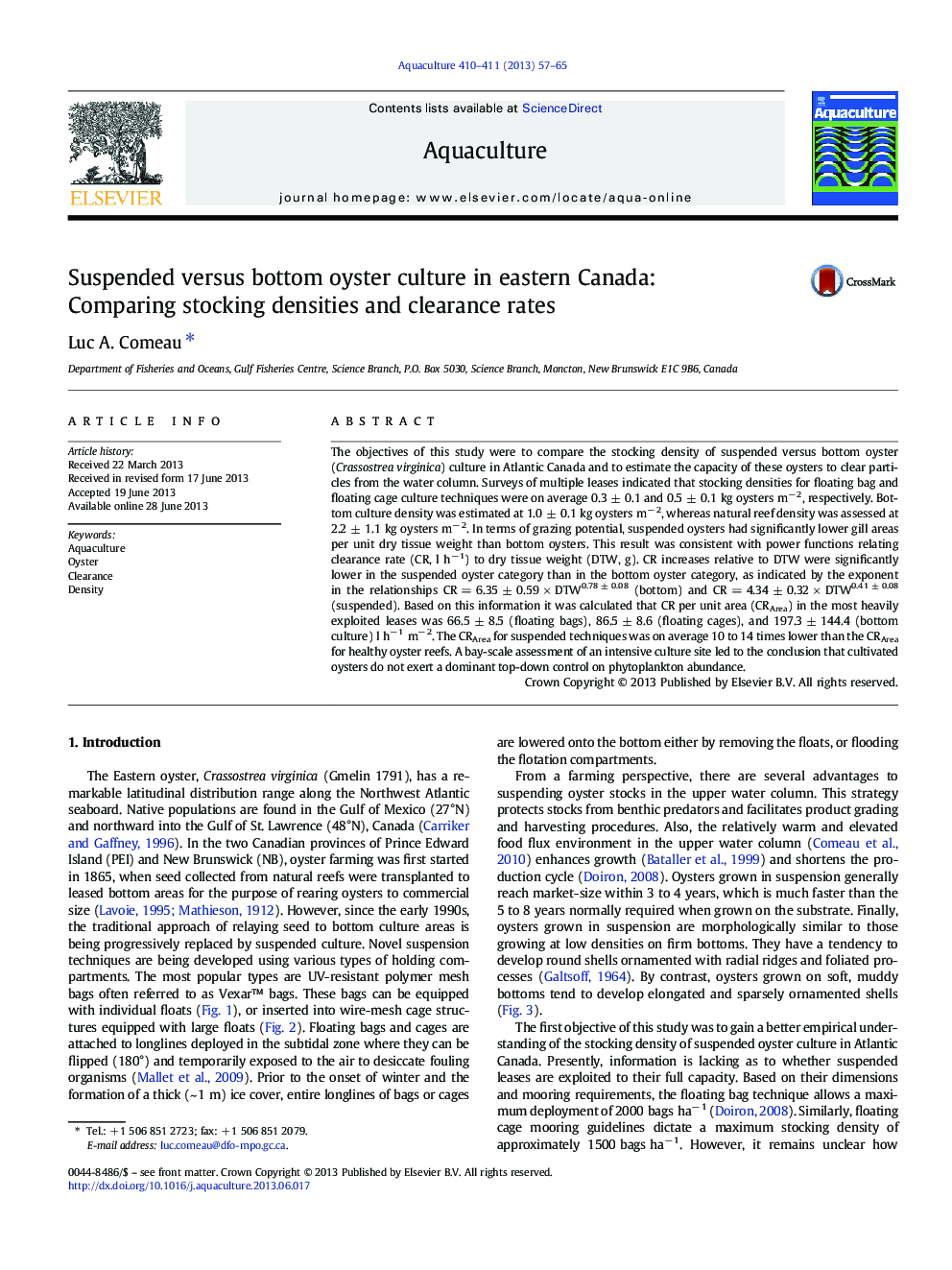| کد مقاله | کد نشریه | سال انتشار | مقاله انگلیسی | نسخه تمام متن |
|---|---|---|---|---|
| 2422098 | 1552868 | 2013 | 9 صفحه PDF | دانلود رایگان |

• Stocking densities were compared in suspended and bottom oyster leases.
• The capacity of these oysters to clear particles from the water was also assessed.
• Suspended culture results in an actual reduction in stocking density.
• Suspended oysters have lower standardized clearance rates than bottom oysters.
• A transition from bottom to suspended culture therefore reduces grazing pressure.
The objectives of this study were to compare the stocking density of suspended versus bottom oyster (Crassostrea virginica) culture in Atlantic Canada and to estimate the capacity of these oysters to clear particles from the water column. Surveys of multiple leases indicated that stocking densities for floating bag and floating cage culture techniques were on average 0.3 ± 0.1 and 0.5 ± 0.1 kg oysters m− 2, respectively. Bottom culture density was estimated at 1.0 ± 0.1 kg oysters m− 2, whereas natural reef density was assessed at 2.2 ± 1.1 kg oysters m− 2. In terms of grazing potential, suspended oysters had significantly lower gill areas per unit dry tissue weight than bottom oysters. This result was consistent with power functions relating clearance rate (CR, l h− 1) to dry tissue weight (DTW, g). CR increases relative to DTW were significantly lower in the suspended oyster category than in the bottom oyster category, as indicated by the exponent in the relationships CR = 6.35 ± 0.59 × DTW0.78 ± 0.08 (bottom) and CR = 4.34 ± 0.32 × DTW0.41 ± 0.08 (suspended). Based on this information it was calculated that CR per unit area (CRArea) in the most heavily exploited leases was 66.5 ± 8.5 (floating bags), 86.5 ± 8.6 (floating cages), and 197.3 ± 144.4 (bottom culture) l h− 1 m− 2. The CRArea for suspended techniques was on average 10 to 14 times lower than the CRArea for healthy oyster reefs. A bay-scale assessment of an intensive culture site led to the conclusion that cultivated oysters do not exert a dominant top-down control on phytoplankton abundance.
Journal: Aquaculture - Volumes 410–411, 10 October 2013, Pages 57–65